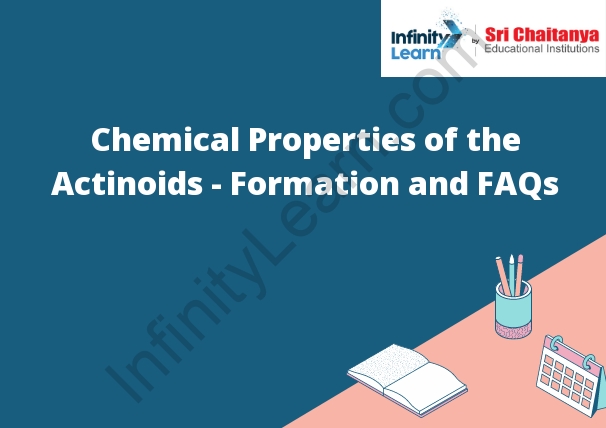Table of Contents
Introduction to Actinoids ; Physical and Chemical Properties of the Actinoids
The actinoids are a group of 15 elements in the periodic table that are located in the bottom left-hand corner. They are all radioactive elements, and they are all named after the element actinium.
The physical and chemical properties of the actinoids vary greatly. Some of them are quite stable, while others are very radioactive and short-lived. They all have relatively high atomic masses, and they all have a number of electrons that varies from 5 to 7.

Chemical Properties of the Actinoids
The actinoids are a group of radioactive elements that are found in the periodic table between the lanthanoids and the transition metals. The actinoids are all highly radioactive, and they all have very short half-lives. The actinoids include the following elements: actinium, thorium, protactinium, uranium, neptunium, plutonium, and americium.
All of the actinoids have some common chemical properties. They all have high densities and are very reactive. They all form radioactive compounds that are very unstable. They also all have low melting points and boiling points.
Electronic Configuration of Actinoids
The electron configuration of the actinoids is the same as that of the lanthanoids, with the exception of the 5f orbitals. The 5f orbitals are higher in energy than the 4f orbitals and are therefore filled later.
Physical Properties of Actinoids:
Physical properties of actinoids depend on the number of protons in the nucleus. All actinoids are radioactive and have a high melting point. They also have a high boiling point and are denser than water.
Actinoids Contraction:
The actinoids contract by means of their actin filaments. The actin filaments are made up of two proteins: actin and myosin. Myosin binds to actin and uses ATP to pull the actin filament along.
Formation of Coloured Ions:
If an element has more than one oxidation number, it can form coloured ions.
In general, the more positive the oxidation number, the more intense the colour.
The colour of an ion is due to the energy of the electrons in the outermost shell.
The higher the energy of the electrons, the more intense the colour.
For example, the ion formed from copper has a very intense blue colour.
The ion formed from iron has a less intense yellow colour.
Ionization of Actinides:
The ionization of actinides can take place in several ways. One way is through the reaction of actinides with water. When actinides react with water, they form hydroxides and ions. The hydroxides are soluble in water, and the ions are not.
Another way that actinides can be ionized is through the reaction of actinides with acids. When actinides react with acids, they form ions and hydrogen gas. The ions are soluble in water, and the hydrogen gas is not.
Oxidation State of Actinides:
The oxidation state of an atom is a measure of the number of electrons that are lost, gained, or shared to form a cation (positively charged ion) or an anion (negatively charged ion).
The oxidation state of an atom in a compound can be determined by looking at the number of electrons that are lost, gained, or shared to form the cation or anion.
Formation of Complexes:
Complexes are formed when an atom or molecule donates one or more electrons to another atom or molecule. This creates a covalent bond between the two atoms or molecules. The donor atom or molecule is called the Lewis base, and the recipient atom or molecule is called the Lewis acid.
Similarities Between Actinoids and Lanthanoids
Both actinoids and lanthanoids are elements in the periodic table that are in the same group (group 3). They both have very similar physical and chemical properties.








